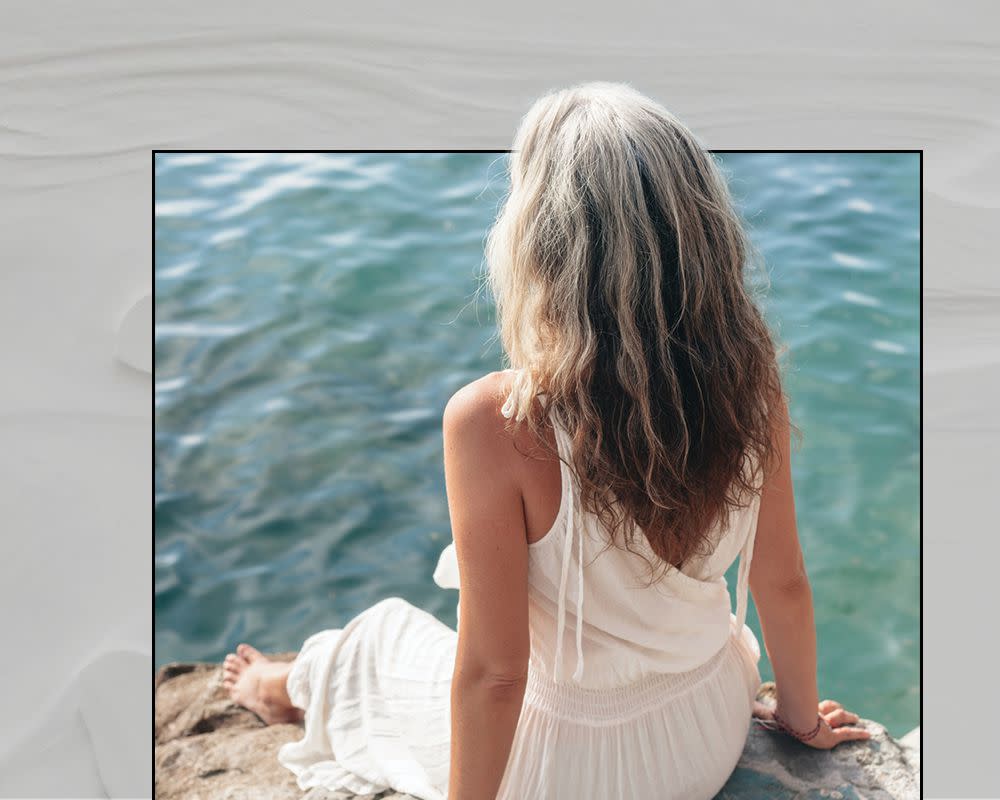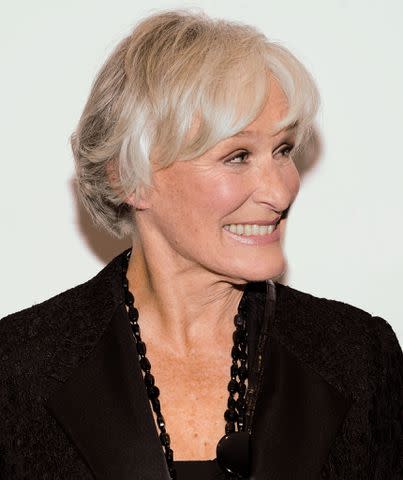How to Transition Gray Hair With Lowlights, According to Stylists

Reviewed by Jeremy Tardo
Depending on where you are in your hair color journey, sometimes making the switch to a full-on silver hue can be a challenge. Enter lowlights, which when blended with highlights, are the key ingredient to full-bodied dimension—and the secret sauce to blending in our grays. Here are a few things you need to know before making the transition to gray hair with lowlights.
Selecting the Right Shade
The first step in the transition to gray hair with lowlights is choosing the right shade. For this, you'll need to take a look at your virgin hair color (also known as your natural base color). If you've highlighted your hair to blend your grays, a few pops of your virgin base tone can provide the most natural-looking contrast.
Without contrast, hair color can fall flat. Growing out your natural gray into full-on silver is becoming a highly sought-out look, but it takes a good amount of time and a hefty amount of patience—lowlights can help during the transition. Singular color can be especially unflattering when it comes to naturally grown-out gray hair because it can give off a yellowish tinge if left unattended. Adding some subtle lowlights can help fight off those unwanted tones.
As with any color change to your hair, a good colorist is going to consider all the colors that make you you: your skin tone, your natural base, and even your eye color. These colors will inform how warm or cool of a lowlight your colorist wants to use and how to make your natural features shine in their best light. Other factors like face shape, hair texture, haircut, and lifestyle (for example, how you style your hair at home) are also extremely informative when choosing a color plan that works best for you. This wide-lens approach helps to gain a more comprehensive picture of your needs.

Maintaining Your Lowlights
Lowlights don't require as many salon visits as highlights do, no matter how they're painted on. When you choose a shade that is as close to your base color as possible, your maintenance becomes a little easier. Rather than first stripping the hair and then going back in to redeposit the desired tone—which is how highlights work—gray hair is already naturally stripped of color, so all that's left to do is add the desired tone back to the hair.
When planning the transition to gray hair with low lights, consider a semi-permanent color. Instead of a color deposit, which is what permanent colors do, semi-permanent colors will temporarily deposit color on the surface of the hair. Gray hair has the tendency to feel dried out, and using a semi-permanent color won't open up the hair shaft and alter your strands' porosity levels. This will leave your grays feeling silkier, smoother, and in better condition.

David Livingston/Getty Images
Lasting Lowlights
Speaking of better condition, at-home care is a crucial step to making any of your salon efforts last; there's no exception when it comes to caring for your grays. As we mentioned earlier, gray hair has a tendency to go sour on its own. You can fight off brassiness the same way you would with grown-out highlights or bleach-and-tones: with a good blue or purple shampoo. (We recommend using Davines' Alchemic shampoo and conditioners or asking your colorist for something similar.) Get something that will assist in intensifying the colors you want to keep and counteracting the ones you don't. Especially if you opt for a semi-permanent color, you'll want to use a color-safe shampoo and conditioner to help prevent fading.
Caring for what's happening at the root is equally as important as caring for our color and anything else happening at the surface. When you first notice your gray hair coming in, you'll notice it has a thicker, coarser density, and possibly even a different texture than you're used to. Grays are typically drier and more porous because as we age, our scalps begin to slow down their sebum (the natural oils from our scalps) production. Using a moisturizing treatment can help boost shine and soften the texture.
Up Next: How to Transition Gray Hair With Lowlights, According to Stylists
Read the original article on Byrdie.

